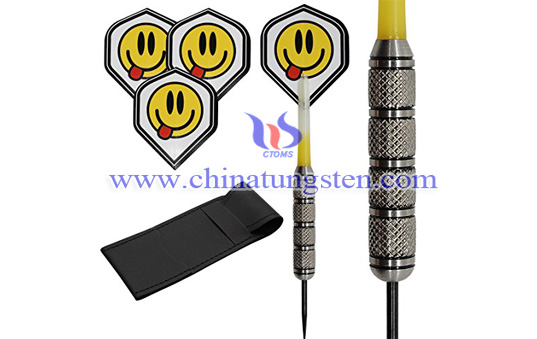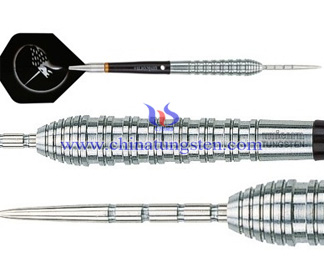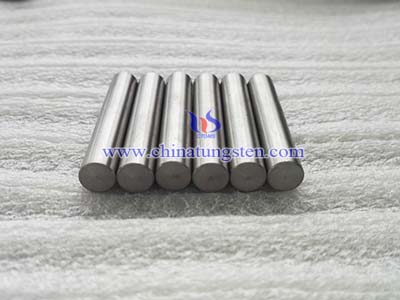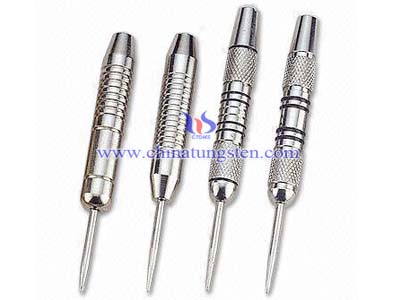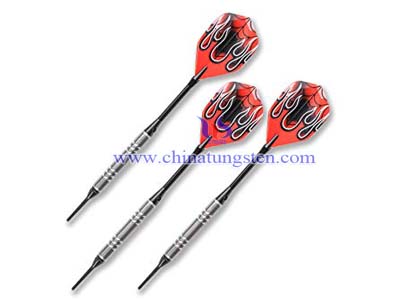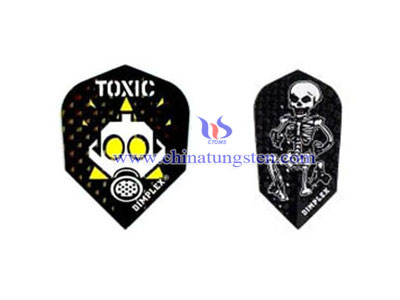The key to improving your accuracy, and your score, is to find a dart that matches your personal preference. When you find a dart that you enjoy throwing, consistency will follow.While brass is still used for inexpensive darts, such darts are large in diameter and the grip wears down quickly, but tungsten darts make everything different.
Why buy tungsten darts? Tungsten is a very dense metal, also very durable. Using tungsten to make a dart barrel results in a smaller dart for the same weight. For anyone who plays darts often, the durability is important, as that helps retain the dart's precision-machined shape, grooves, and knurling.
Size is usually the first factor considered when choosing tungsten darts. At about half the diameter of a similar weight brass dart, it is a lot easier to fit two or more tungsten darts into a double or triple area.
Think about the end of a cricket games, where you need to hit several bulls to finish. An old-fashioned fat brass dart, the area is nearly covered by the first dart. Switching to a slim tungsten darts barrel easily allows two or three darts to fit in the same area.
As with most products, tungsten darts are not all the same. Raw tungsten does not melt easily, and is not readily made into machinable shapes. Tungsten is generally ground into a fine powder, which is then blended with a variety of other metals that act as binding agents. In the case of darts, the most common blends contain nickel, with smaller amounts of copper and ferrous compounds. The mixture is heated and compressed to make a solid billet or bar, which can then be machined into darts barrels.
Very high percentages of tungsten, such as 98% tungsten darts, have a wonderful dense feel and a surface that resists wear for a long time. However, the high concentration of tungsten powder also makes them brittle, and more prone to break if dropped on hard surface such as a concrete garage floor.
To get around those problems, most tungsten darts are now made of mixtures ranging from 70% to 95% tungsten. Lower density barrels are much cheaper, as they are easier to manufacture with automated machinery Low density darts also wear faster, from skin acid, friction, hitting other darts, falling on floors, etc.
The majority of steel-point darts used by competitive players in league and tournament play are now made of 90% tungsten. Soft-tip darts are commonly made of 80% tungsten, which is cheaper, less dense, and less brittle. Soft-tip darts are prone to bounce out a lot, and electronic machines are often found in places with hard floors. The softer 80% tungsten darts are less likely to break when constantly falling such hard floors. As steel-point darts are more often played over carpeted areas, breakage is a little less of a problem.
Bristle dartboards for steel-point darts have a scoring are that is roughly 20% smaller than most soft-tip boards. With smaller scoring areas on a bristle board, the thinner diameter of 90% or 95% tungsten darts makes sense for competitive steel-point darters.
Budget priced darts are generally made of 80% or 70% tungsten. Below 70%, most of the benefits of tungsten darts are lost. Darts made of 60% tungsten or less are very bulky, and have poor wear resistance. The reason for making darts of 70% or less is to get the price down.. which generally means taking other shortcuts in the machining process that also result in a lesser quality dart.
Within each percentage range of tungsten darts, there is a wide range of quality. The best darts for competition are also the most expensive to make and the most difficult to machine. Cheaper darts can be made by adjusting the blend by adding softer metals. For instance, a bit more copper or iron may be added. A "softer" blend means that cheaper cutting tools can be used, the tooling won't dull as quickly, and the machinery can produce more darts in a given amount of time.
Different blends may also slightly change the appearance of the finished darts. Some darts look shinier, others have a more grainy appearance. Surface treatments during the manufacturing process can also make a great difference in the appearance of a new set of darts. A wide variey of coatings are often applied to darts barrels, ranging from simple paint or powder-coating to high-tech vapor-deposit coatings such as Titanium Nitride.
Some darts advertised as "Tungsten" actually have very little tungsten content, even though at first glance they may look similar to a good quality dart. These cheap imitation darts will be much larger in diameter & length, for the same weight as a high-quality dart. And the price may be substantially cheaper than most other tungsten darts. Some common sense rules are universal, no matter what the product. If a price looks too low to be real, then the darts are probably not any sort of a bargain.
